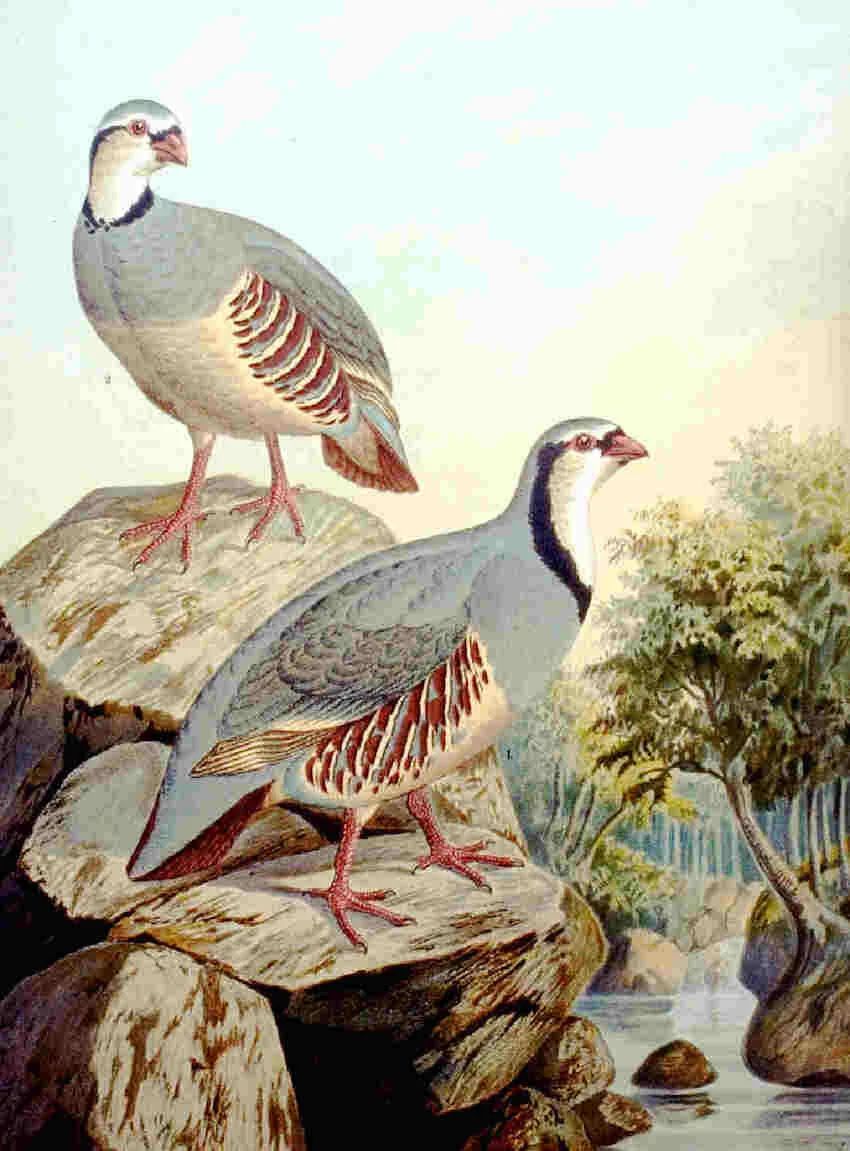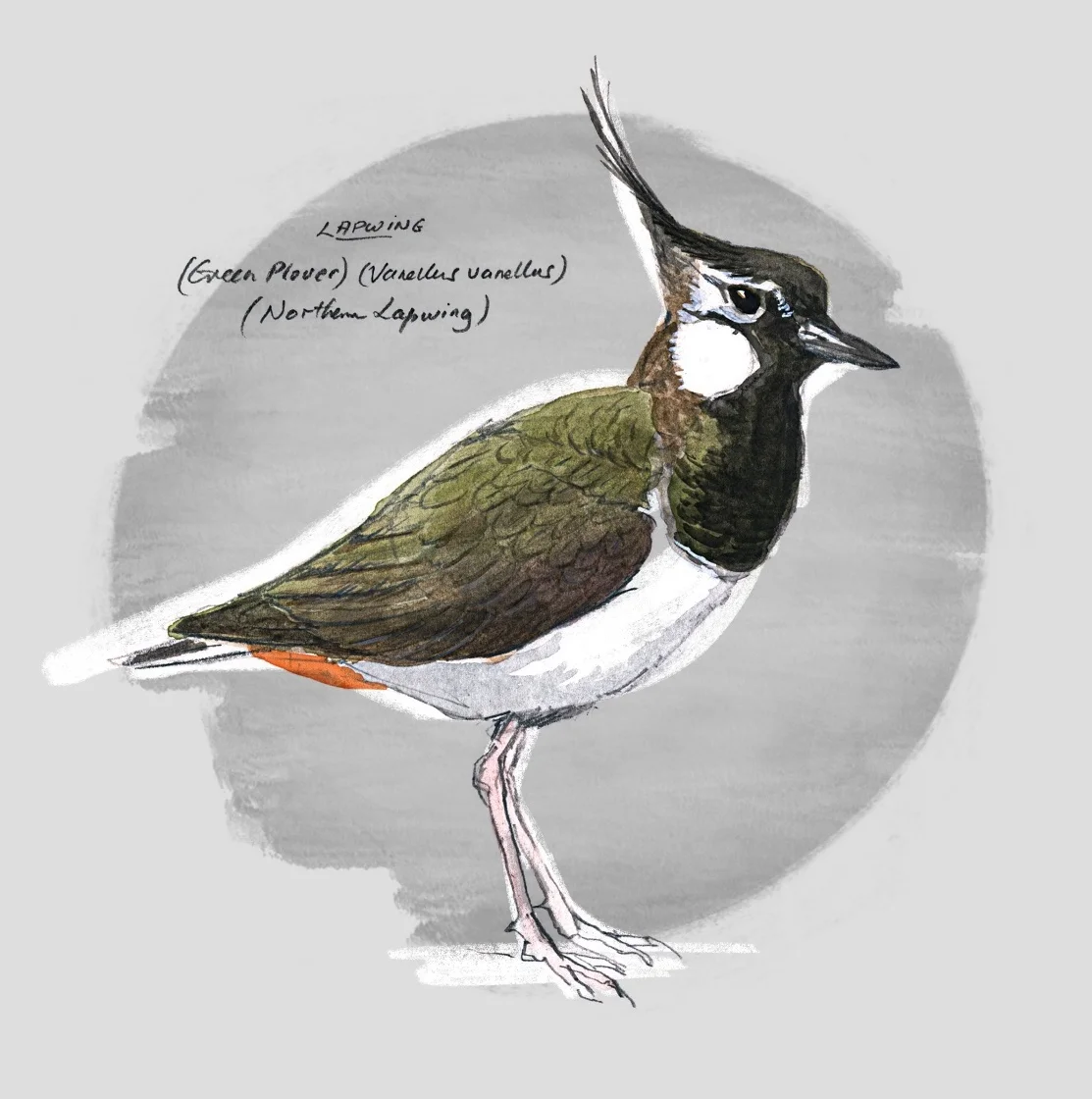Small grebe with rich chestnut neck and fluffy appearance. The basic call is a rapid trill which rises in pitch and volume before trailing off:
GREAT CRESTED GREBE (Podiceps cristatus) - Grèbe huppé
A common bird on all lowland water bodies across the north of Switzerland. Its most frequently heard call is a goose-like “honk”, listen this and other calls here.
GREY HERON (Ardea cinerea) - Héron cendré
Common around marshland and slow moving water, but also seen in agricultural fields, especially in winter. Its call is a very loud shriek.
HONEY BUZZARD (Pernis apivorous) -Bondrée apivore
Thinly scattered throughout Switzerland, more common as a passage migrant. Easily overlooked but listen out for their di-syllabic call “ke-leer”.
BLACK KITE (Milvus migrans) -Milan noir
A summer visitor to the lowlands of Switzerland, seen around farmland, lake edges where it can catch insects and small animals but also where it can scavenge. They make a distinctive winnowing call, take a look at the spectrogram to see the tremolo in their voice.
RED KITE (Milvus milvus) - Milan royal
Both a resident and summer visitor to Switzerland, reaching high densities in Central regions. Frequents farmland and small villages. Numbers have increased dramatically in the past 20 years. The call is a very human-sounding long whistle followed by modulations:
SPARROWHAWK (Accipiter nisus) - Epervier d’Europe
Found across Europe. Hunts small birds which it catches on the wing in woodlands and gardens. Is mostly silent but does have a distinctive voice when it does call, it sounds rather worried to my ears.
BUZZARD (Buteo buteo) - Buse variable
Found throughout Switzerland, a common bird of prey on the plains and in the mountains. It has a far-carrying plaintive cry, often heard whilst soaring.
KESTREL (Falco tinnunculus) - Faucon crécerelle
The most commonly seen falcon in our region. Distinctive hovering technique whilst hunting gives immediate identification, but also has a far-carrying “ki-ki-ki” call.
HAZELHEN / HAZEL GROUSE (Bonasia bonasia) - Gélinotte des bois
A shy bird of evergreen forests with dense undergrowth, seldom seen and with extremely high-pitched calls which are hard to hear.
BLACK GROUSE (Tetrao tetrix) - Tétras lyre
A hill and mountain bird of forest and forest edges. Quite shy and with a strange “bubbling” call that may remind you of a dove if you listen carefully.
CAPERCAILLIE (Tetrao urogallus) - Grand tétras
A shy and rare bird of old growth forest, one of the largest birds in Europe. It displays in leks with a characteristic “cork popping” sound.
ROCK PARTRIDGE (Alectoris graeca) Perdrix bartavelle
A not so common bird of the mountains where it inhabits sunny slopes rich with boulders, rocky outcrops and loose scree below cliffs. Very hard to spot due to its cryptic colouration, it is often first detected from its staccato stridulating call:
PHEASANT (Phasianus colchicus) - Faisan de colchide
An introduced species of forest edge and fringe of agricultural lands, now well established in Europe. It has a distinctive harsh “crow” call.
COOT (Fulica atra) - Foulque macroule
Very common in lakes and small water bodies. Generally noisy and aggressive with a variety of calls (which can listen to here) but the most often heard is a “kowping” call.
LAPWING (Vanellus vanellus) - Vaneau huppé
Found only in lowland marshy areas, in Switzerland it is mainly a passage migrant but with some few pairs breeding in areas under protection. It has a dramatic display flight with a characteristic call, learn more here.
EURASIAN CURLEW (Numenius arquata) - Courlis cendré
A very large wading bird, with a long down-curved beak, whose identity could only be confused with Whimbrel. It is always very vocal, making a range of songs and calls. Its English name derives from its basic call “cur-lui”
WOODCOCK (Scolopax rusticola) - Bécasse des bois
A very interesting bird, most active at dusk and dawn (crepuscular). Basically a marsh-dwelling bird that prefers forest and flies in the dark to display its territory and attract females making a very distinctive croaking sound.
SNIPE (Gallinago gallinago) - Bécassine des marais
Mostly a winter visitor to Switzerland from its core range to the north and north-east. Found in marshes and river margins. Hard to spot when not in flight. It has a distinctive “chip-per” call when stationary and also in flight. Famous for its “drumming”.
STOCK DOVE (Columba oenas) - Pigeon columbin
A bird of the forest usually found up in the canopy, will occasionally visit fields. Superficially like a Wood Pigeon but with a very different call, which may remind you of an owl.



















